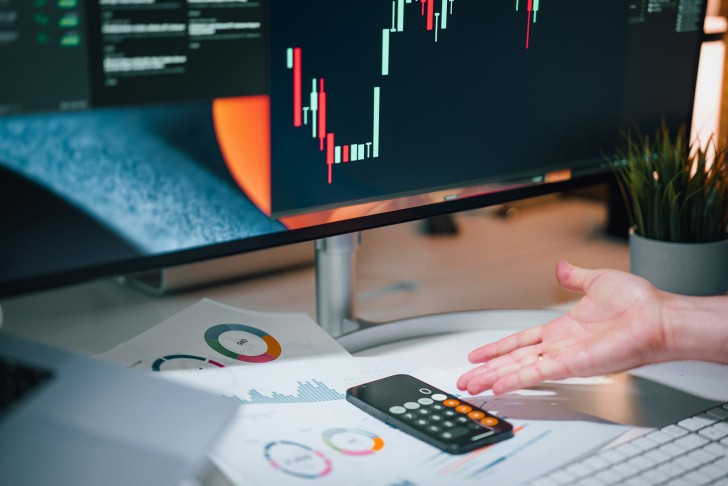Competitive trading operations now rely heavily on real-time prediction engines. More quickly than any human trader could, these systems examine market data, spot trends, and produce forecasts. Speed isn't the only benefit. It's the capacity to simultaneously process enormous volumes of data and identify minute correlations that are invisible to the human eye.
The Issue of Volume
Massive amounts of data are produced by financial markets. The price of stocks changes several times every second. Every hour, hundreds of articles are published in news feeds. Global markets release economic indicators on time. The sentiment on social media is always changing. Credit spreads, futures curves, and option chains all move independently while affecting one another.
It is impossible for human traders to keep an eye on all of these data streams at once. They concentrate on particular industries, tools, or tactics. Although this specialization is effective, it introduces blind spots. A tech stock trader may not notice how changes in the energy sector impact semiconductor supply chains. Currency traders may fail to notice how changes in the bond market indicate future movements.
This is resolved by predictive engines, which keep an eye on everything simultaneously. They consume economic releases, social sentiment, price data, news feeds, and historical trends. As new data becomes available, the systems update their predictions based on the ongoing processing of this data. This all-encompassing perspective captures connections that skilled human traders overlook.
Large-Scale Pattern Recognition
Though they are rarely straightforward or constant, markets do display patterns. Because of the different broader context, a price formation that preceded a rally last month could indicate a decline this month. When volatility spikes, volume patterns that were effective in low volatility settings don't work. As market regimes change, so do asset correlations.
This complexity is well handled by predictive engines. They don't follow set guidelines. Rather, they gain knowledge from extensive historical datasets, determining which patterns are significant in particular situations. Under certain circumstances, machine learning models can identify that a particular combination of price action, volume, and market breadth predicts moves with a particular probability.
The pattern recognition scale is very important. A human trader may be able to recall hundreds or even thousands of comparable market scenarios. Millions of historical data points are analyzed by a predictive engine. Patterns too faint or rare for human recognition are revealed by this statistical depth. Additionally, it measures each pattern's dependability rather than depending solely on gut instinct.
Speed as a Differentiator
Market opportunities frequently last only a few milliseconds or seconds. The opportunity is gone by the time a human trader discovers a price difference and takes action. At the speed of a machine, real-time predictive engines recognize and react to opportunities.
Thousands of tiny opportunities are compounded by this speed advantage. On hundreds of trades every day, a predictive system could pick up a tiny edge. When combined, these trades yield steady returns, but none of them produce spectacular profits on their own. It is just not possible for human traders to execute at this rate and with consistent quality.
Additionally, the speed lowers risk. Markets fluctuate while people consider options and make decisions. A position that looked attractive five seconds ago might be underwater by the time the trade executes. In order to maintain a relatively stable market between decision and execution, predictive engines analyze and act quickly enough.
Integration Makes All the Difference
When predictive engines are integrated throughout the trading operation, the true power is revealed. Risk management systems use predictions to size positions appropriately. Forecasts are used by portfolio construction tools to balance exposures. Predicted price paths are used by execution algorithms to reduce market impact.
Beyond simple prediction, AI in finance is transforming into all-encompassing decision support systems that manage every facet of trading. In order to suggest the best course of action, these integrated platforms combine predictions with risk parameters, liquidity constraints, and portfolio objectives. They do more than just predict potential price movements. By taking care of the computational burden of analyzing thousands of possible outcomes at once, the technology frees up human traders to concentrate on strategic choices and unique circumstances that call for discretion rather than computation.
Human Traders Continue to Be Important
Human traders have not been replaced by predictive engines. They have altered human behavior. Traders concentrate on strategy, risk management, and handling odd circumstances rather than keeping an eye on screens and making regular trades. Human judgment becomes crucial when markets exhibit abnormal behavior. Unprecedented events are difficult for predictive models that were trained on historical data to predict.
The most effective trading desks blend human intelligence with machine efficiency. High-frequency pattern recognition and routine execution are handled by predictive engines. Humans establish risk parameters, formulate strategies, and step in when market conditions deviate from the norm. This division of labor makes use of each party's advantages.
The Reality of Competition
There are insurmountable disadvantages for trading desks without advanced predictive engines. They take longer to recognize opportunities. They don't process as much information. With every trade, they capture less edge. These drawbacks eventually add up to performance gaps that are impossible to close with skill alone.
The technology is still developing. Models get increasingly complex. The speed of processing speeds up. Data sources grow. The bar for competition is constantly rising. Businesses that don't spend money on real-time prediction tools not only lose out on chances to get better. They lag behind rivals who use these tools even more.
The speed and complexity of modern trading necessitate machine assistance. Predictive engines that operate in real time are not optional upgrades. They are essential components of the infrastructure needed to compete in today's markets.
 Editorial staff
Editorial staff

 Editorial staff
Editorial staff


